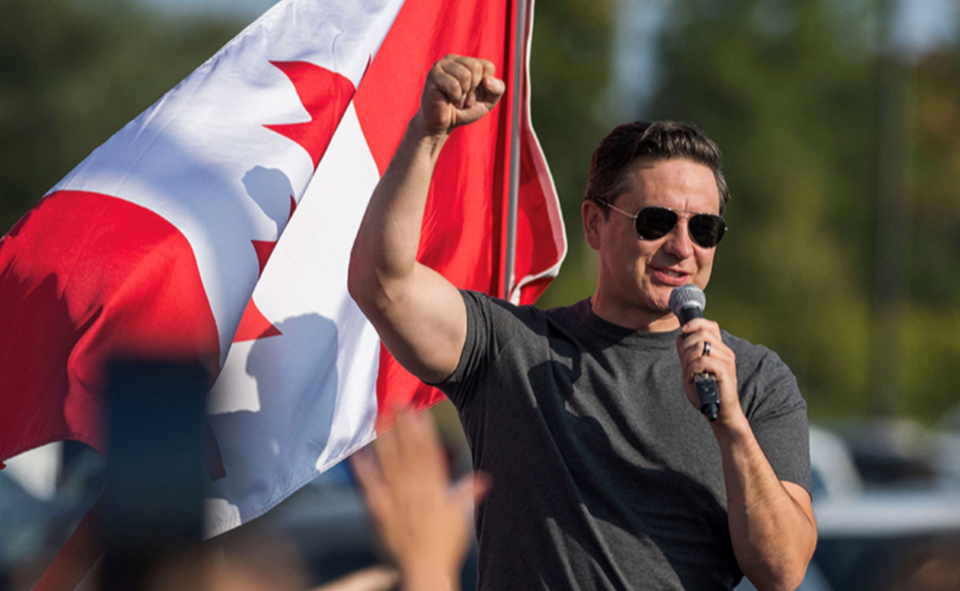To federal Liberal Party supporters, the end of summer was supposed to bring positive momentum for the country’s governing party. The reality is remarkably different.
Our latest look at the federal political scene shows a particularly dominant Conservative Party, counting on the support of 40 per cent of decided voters across Canada (up two points since April). The Liberals are second with 25 per cent (down one point), followed by the NDP with 17 per cent (down three points), the Bloc Québécois with nine per cent (down one point), the Green Party with six per cent (up three points) and the People’s Party with two per cent (up one point).
Alberta remains a stronghold for the Official Opposition, with 55 per cent of decided voters supporting the Conservatives. The party is also ahead in Ontario (39 per cent) but remains in third place in Quebec (21 per cent, behind the Liberals at 28 per cent and the Bloc at 33 per cent).
At opposing ends of the country, majorities of decided voters in B.C. (50 per cent) and Atlantic Canada (51 per cent) say they would vote Conservative if an election were held tomorrow. These are numbers that Stephen Harper never got close to matching in any of his election victories, including the majority mandate earned in 2011.
The jump in public support is accompanied by an increase in positive perceptions of Conservative leader Pierre Poilievre. His nationwide approval rating has reached 52 per cent (up five points), ahead of the NDP’s Jagmeet Singh (42 per cent, down six points), Green leader Elizabeth May (35 per cent, up two points), Prime Minister Justin Trudeau (34 per cent, down five points) and Maxime Bernier of the People’s Party (26 per cent, up four points).
On the “best prime minister” question, Poilievre’s advantage over Trudeau is significant. More than a third of Canadians (37 per cent, up five points) think Poilievre would be the best head of government, followed by Trudeau (22 per cent, down four points) and Singh (14 per cent, down three points).
The early stages of the national pharmacare program, and the introduction of the interim Canada Dental Benefit, have not made Canadians happier with Ottawa. This month, 39 per cent say they are satisfied with what the Liberals and NDP have accomplished since their March 2022 agreement (down four points). More than half (54 per cent, up five points) are dissatisfied.
While just over a third of Canadians (34 per cent, down four points) are comfortable with Trudeau being in charge of the national economy, a majority (54 per cent, up five points) would be content with Poilievre calling the shots. This sentiment reaches 62 per cent in Alberta, 60 per cent in B.C. and 55 per cent in Ontario.
More than four in five Conservative voters in the last federal election (85 per cent) would be comfortable with Poilievre handling economic policy. Among Liberal voters in 2021, support for Trudeau as a financial manager stands at 61 per cent, while 36 per cent believe things could be better.
The Conservatives are ahead across all age groups, both genders and in every province with the exception of Quebec.
It is often assumed that young voters will naturally gravitate towards centre-left parties. Their support hinges on emotion, leadership and results. While more than two in five Canadians aged 18 to 34 think the Liberals and the NDP have done well since their March 2022 deal (42 per cent), a larger proportion (47 per cent) voices displeasure. The official announcements of the past few months have not helped Trudeau or Singh and have not made a dent in the level of support for the Conservatives. •
Mario Canseco is president of Research Co.
Results are based on an online study conducted from August 12-14 among 1,002 adults in Canada. The data has been statistically weighted according to Canadian census figures. The margin of error is plus or minus 3.1 percentage points, 19 times out of 20.




